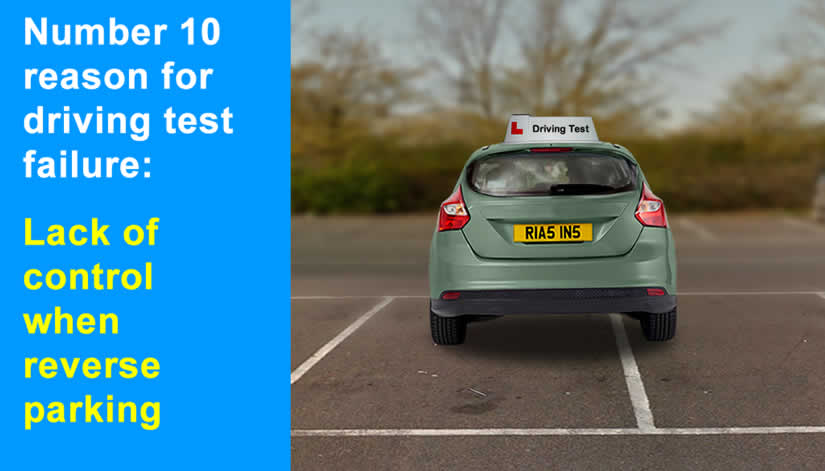During the practical driving test, the examiner will have the choice of four manoeuvres to choose from. Two of these manoeuvre involve reverse parking and are:
- reversing into a bay
- parallel parking
From the top 10 driving test fails, we’re now at number 10 which is not keeping control of the car during reverse parking. During the test, any faults marked by the examiner in this category will be marked under the ‘Reverse park – Control’ section of the driving test report. Repeatedly making identical (minor) faults in this category, or a single serious or dangerous fault will result in failing the driving test.
Reversing onto the Pavement During Parallel Parking
This fault involves the test candidate attempting to reverse parallel to the kerb to complete the parallel parking manoeuvre. Instead of finishing parallel to the kerb, the car’s passenger side back wheel, front wheel or both wheels end up on the pavement.
When carrying out any manoeuvre, it’s often highly beneficial to break the manoeuvre down into individual sections and stop the car after completing each section. Additionally, use reference markers around the car to help you gauge where the kerb is and when to turn the steering wheel.
Driving onto the pavement during the parallel parking manoeuvre is usually a test failure. If you have lost sight of where you car is in relation to the kerb, safely pull forward and try again. Above all, always avoid mounting the pavement.
Repositioning the Car Too Many Times During Parking
This instance involves the test candidate attempting to reposition the car too many times either during the bay parking manoeuvre or the parallel parking manoeuvre. Specifically, the faults occur when:
- repositioning the car within the lines during bay parking
- repositioning the car close to the kerb during parallel parking
During the driving test manoeuvre, if you feel that you need to readjust or reposition your car during the bay park or parallel park, this is perfectly acceptable and you should certainly do so.
However, if you take too long or reposition the car too many times, you may risk failing the manoeuvre due to a lack of control. There’s no specific time limit on how long you can take to carry out a manoeuvre, or no specific limit on how many times you can reposition, but if you aim to complete a manoeuvre in 5 minutes or less and reposition in 3 attempts or less, you should be fine.
It’s important however not to rush and to ensure you take an appropriate amount of time to carry out the manoeuvre safely, to conduct sufficient observations and maintain good control of the car.
Parking Outside of the Bay Lines
During the bay parking manoeuvre, the test candidate’s final parking position is outside of the bay lines.
The driving test manoeuvres offers you the most control you’ll have throughout the entire test. You can carry out the manoeuvres slowly and can readjust and reposition if necessary. You don’t get that chance when you’re out on the road, so make use of that opportunity.
There are plenty of reference points you can use to help with manoeuvres, you can also reposition your door mirrors to give you a better view of the bay lines (don’t forget to change them back when the manoeuvre is completed). When you’re reversing into the bay, you can even lower the window and physically put your head out of the window to look at the lines if you wish.
If you do find that your car is not within the bay lines, do not finish it there as that’s a sure test fail. Pull forward and make the necessary adjustments so that your car finishes within the lines. Do note however, when making any car repositions, always carry out the appropriate safety observations before doing so.
